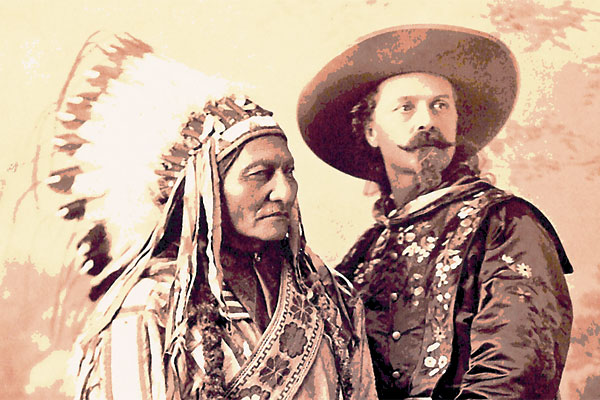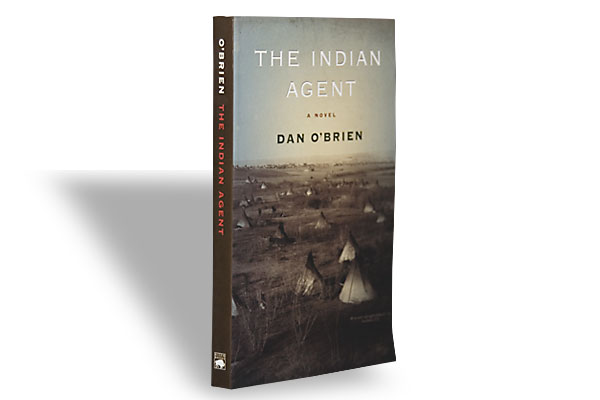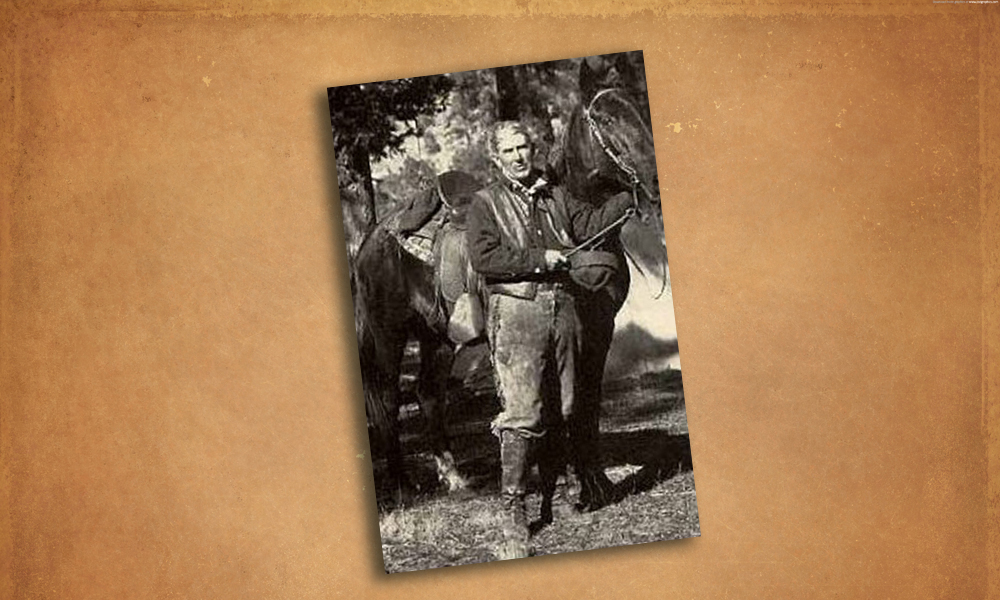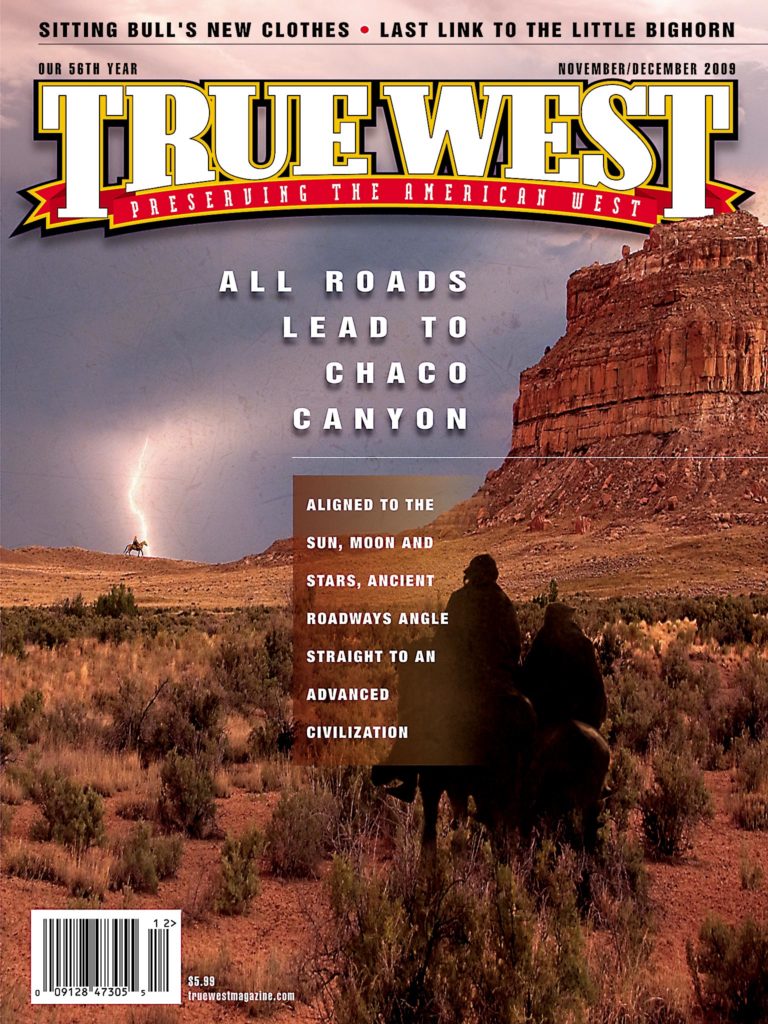
“He honored Sitting Bull by dressing him in…fine clothes with his own hands. [The Arikara (Ree) chief] put on him two fine scarlet trailing breech-cloths, a foot wide, reaching from his belt to the ground, before and behind.
“He helped him into a pair of handsome leggings of soft, pliant buckskin, decorated with a broad bead stripe down the leg, and having heavy twisted fringes from the hip to ankle.
“On his feet he placed moccasins with stiff rawhide soles and flexible elkskin uppers covered with designs in dyed porcupine quills.
“Over Sitting Bull’s head the Ree chief slipped a shirt of mountain-sheep’s skin, with trailing fringes, decorations of quillwork across the shoulders and chest, and tassels of hair in rows on either side. This shirt he laced up the side, and tied the sleeves to fit….”
By appealing to the vanity and sense of style of the great Sioux War Chief Sitting Bull, an unnamed Arikara chief averted a war between the two camps in 1862, as shared in this 1932 account by Chief Joseph White Bull, nephew of Sitting Bull (translated by Stanley Vestal in his biography of White Bull, Warpath).
Personally dressing Sitting Bull in traditional Plains Indian finery may have been an act of appeasement—the nomadic Sioux were better known for their battle skills than the more settled Rees—but then again, the cause of the dispute was a horse race! Honor and bloodshed were both spared.
White Bull’s description of the Arikara garb articulates George Catlin’s, Karl Bodmer’s and other artists’ artistic depictions of Arikara, Mandan and other Indians who lived along the Missouri River in the years after Lewis and Clark’s Corps of Discovery passed through the area. From the description, we know the various pieces were the finest, most highly prized apparel available to Northern Plains Indians in that era—regalia that was suitable for a proud warrior and chief like Sitting Bull. The buckskin leggings, the sheepskin shirt, the fringe trim and the porcupine quill accents were all components of Plains Indian apparel before Europeans arrived in the New World. The scarlet breech-cloths were likely woven goods acquired from white traders who operated along the Missouri into the Dakotas out of St. Louis, as were the beads used to decorate the leggings. The quill work, the beads and the breech-cloth all suggest attire for ceremonial events.
Woven cloth and glass and ceramic beads were among the first transformative goods from Europe adopted by American Indian cultures. The lifestyle and territory of the Sioux had already expanded dramatically with the arrival of horses, which had migrated to the plains after being accidentally reintroduced to North America by 16th-century Spanish conquistadors. It would not be long before the detriments of contact with whites would overwhelm the benefits, from the perspective of the Indians.
While American Indian culture was ultimately overwhelmed by encroaching European culture, Indian art and design—and even some of their apparel—seeped into frontier tastes and sensibilities of Americans and Europeans who ventured West throughout the 1800s. That influence continues to flavor Western apparel today.
Take Sitting Bull’s new mountain-sheep’s skin shirt for instance. That shirt may have later been decorated by Sitting Bull’s wife with pictures illustrating his courage in preparing for battle, then bravely entering the enemy’s camp by himself. “Only a person of honor and achievement could wear a decorated shirt,” says Joseph Horse Capture, coauthor of Beauty, Honor and Tradition: The Legacy of Plains Indian Shirts. He adds, “They are essentially a resume for American Indian guys.”
Pictographs have found their way onto modern fashion, as a way of remembering the art of the Plains Indians. Patricia Wolf is particularly inspired by the “ceremonial clothes that they wore for dancing and other spiritual ceremonies, including weddings and burials.” She and her husband Sam are inspired by Shoshoni, Cheyenne and Sioux Indian artworks they have seen in print and in museums.
“We have an extensive library of books and [magazine] clippings with Indian art,” Sam says. The “Captures Guns” shirtjacket art is based on the triumph of spears and arrows over rifles recorded in a ledger book from the Smithsonian Institution collection. Similar Indian designs, all hand painted, can be seen on apparel by Patricia Wolf, such as the horses depicted on her shawl-collared ladies’ bolero vest.
Pictograph designs and other representative Indian depictions are also currently found on boots by Corral Boots, ties and shirts by Rockmount Ranch Wear, and silver jewelry by Douglas Magnus and Rocki Gorman.
Rusty Dorr, whose fashion has appeared in Vogue and Playboy under her company Mahopa, specializes in Indian-influenced outerwear. Her handcrafted deerskin coats reflect the traditional brain-tanned deerhide robes and shirts. Her jackets feature accents such as faux porcupine quills and harepipe, originally made from the leg bones of hares, a design that frequently appeared in Indian breastplates.
The textured surfaces fashionable in men’s Western jackets today also harken to the unfinished hides and skins worn by Indians. Scully is one of the leading manufacturers of such leather apparel, with many of its more popular designs featuring fringe. Fringe was a functional design element intended to divert rainwater from seams and edges, says Jim Carpenter, national sales manager for Scully. The intrinsic beauty and motion of fringe enhances its practical value. “All of these things travel back to the Indians,” he says.
The animal-hide robes traditionally worn by Indians were eventually displaced by richly colored trade blankets with bold patterns. These blankets were even adapted by mountain men to make capotes, and eventually they became the wool coats made today by Pendleton and Double D Ranch. The geometric patterns and color stories have also influenced braided horsehair patterns in belts and hatbands by companies such as M&F Western, 3D Belt Co., Colorado Horsehair and Wrangler, not to mention moccasins and sandals from Minnetonka and KQ Designs.
Unlike animal hides, which tended to be clammy and stiff, woven wool “kept you warm when it was wet, it breathed and it was very functional” for numerous applications, says Robert Christnacht, division manager at Pendleton. “The blanket quickly moved from being just a warmth textile to also being a piece of apparel, first for function, and then for fashion,” he explains. “The early trading posts of the Hudson Bay Co., [John Jacob] Astor and so on found that the brighter the color and the more pattern in the blankets, the more value they commanded in the Indian marketplace.”
Pendleton, celebrating its centennial this year, became a design leader among manufacturers of Indian trade blankets after the turn of the 20th century. Blankets continue to be a significant part of its business, especially among American Indians. The rich colors and intricate designs preferred by their blanket customers are genre-defining elements in the company’s Western apparel and outerwear.
While many of the American Indian-inspired designs seen in Western apparel have practical purposes, Horse Capture says many developed artistically simply because they looked nice.
“People tend to forget that sometimes you do things just for aesthetic reasons,” he says. Adding that aesthetics were as important to warriors and medicine men and other Indians as they are to any other culture, he concludes, “It’s the same with everyone everywhere: when you look good, you feel good.”






